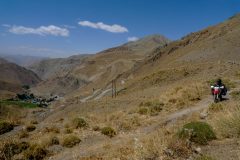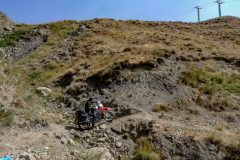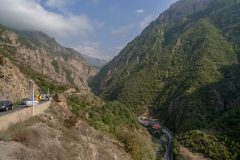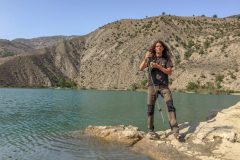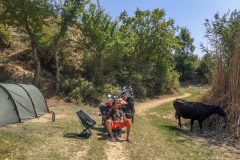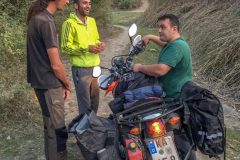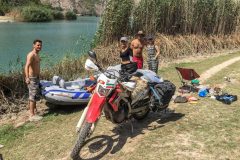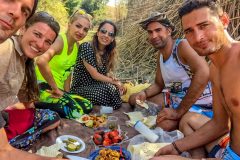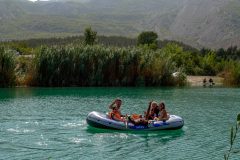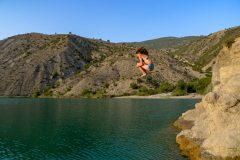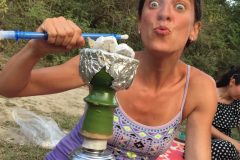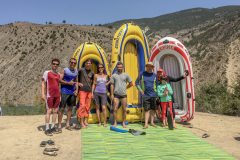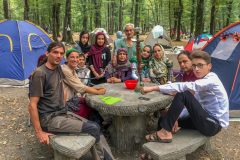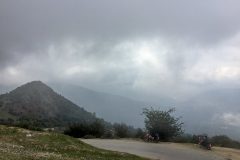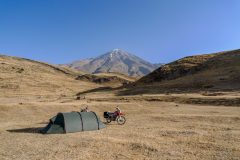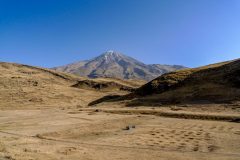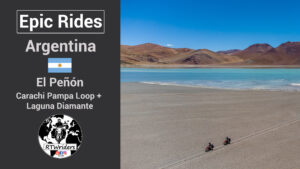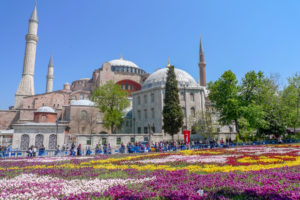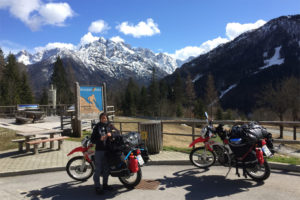Many things that are completely normal for us, are not allowed or prescribed in Iran. All women must wear headscarves, including tourists. This can be from completely covered up, to just hanging very casually over the bun. Most of the women we have met don’t really like it. Hardly surprising at temperatures up to 50 °C (120°F). What is interesting to see is, that most men see it the same way. If you meet Iranian women hiking in the mountains or away from the crowds in nature, many of them take off their headscarves immediately.
The Iranian Rial is in free fall that time. In may 2018, you could get 70,000 to 80,000 Rials for 1 US$ on the black market. When we entered the country in the end of august 2018, it was already 100,000 Rials and a short time later in Tehran, we were able to exchange 1 US$ for 130,000 Rials. The drop in value is dramatic and of course hits the population hard. Imported goods are incredibly expensive for the locals. Travelling is almost impossible. Irans image in this world is, to express it gently, not the best and the Iranian passport is probably one of the worst passports in this world for travelling. They also need a visa for almost every country in the world. The Rials inflation does make travelling abroad also extremely expensive.
This fact is very sad, because the Iranians are real camping enthusiasts and crazy about travelling. They just camp and picnic everywhere. In the great outdoors, in a city park or right next to a highway. Even in the big cities there are usually opportunities to pitch your tent.
Women are not allowed to ride motorcycles in Iran – not in public traffic at least – and, like already mentioned before, motorcycles larger than 250cc are also not allowed. However tourists are excluded from this, what makes Miriam a bit like a small revolution on wheels. A woman on a large motorcycle attracts a lot of attention in motorcycle-crazy Iran. So it frequently happens, that women in the passing cars roll down their windows to yell “I love you” at her. “Thumbs up” is happening all the time.
Discos, parties and especially alcohol are strictly prohibited. In the beginning we were still wondering, why Iranians camp in the middle of the pampas and often dance to loud music like crazy around their tents in the evenings. Many people try to escape the restricted cities in their free time and go out into the great outdoors, where you can’t find police, to do all these things that are dubiously forbidden.
Despite all the circumstances, Iranians are by far one of the friendliest people in the world. The hospitality goes so far, that you can sometimes get embarrassed. We are invited to homes or to dinner everywhere. If you stop at the side of the road, you can be sure to be asked shortly afterwards, whether everything is okay or help is needed. In contrast to Europe, people here are happy to see foreigners and treat them like kings. In this regard, the Western countries are unfortunately light years behind.
In Iran there is a form of courtesy called Taarof or Tarof, which is somewhat unusual for us. It often happens that you want to buy something in a shop and the shopkeeper refuses the payment and instead says “Gh’aabel nadaareh”. This means that the customer has more value than the goods or is more important than the goods for the shopkeeper. This person expresses his politeness in a special way, which does not really mean that he does not want to be paid. So as a return politeness, you have to insist several times, that the seller accepts your payment. Nevertheless it has happened quite often, that we insisted to pay, but were not allowed to do so in the end e.g. ice cream shops. As already mentioned before – the guest is king in Iran.
We leave Tehran after another day of rest for a round trip up north and also to wait for our visas. We choose a smaller road to the Dizin ski resort, that should also lead us to the main road to Chalus later. At the top of the pass the road is suddenly closed. We are told that we cannot go any further at this point. This is quite annoying at first, since riding the whole route back to Tehran to catch the main road to Chalus is quite a detour. Beside that, we can already see the ski lift building of Dizin and the continuing road is very close. So we decide to continue anyway and give it a try. Although the road is blocked for cars, it cannot stop our motorcycles for the time being. A few kilometers further we see the reason for the closure. The road just collapsed completely and even with our bikes there is no way to get through this. We turn around and try a few hundred meters further up to reach the ski slope under the lift by riding cross-country. After a fairly blocked passage we are fortunately standing on the meadow below the lift and can ride the remaining kilometers into the valley from there.
It was too late to reach Chalus. A look at the map shows a small lake and we decide to check this place for a camping possibility. The lake is located between mountains just outside of a small village and can only be reached on a bad gravel road. We find a nice spot for our tent right on the shore. It seems to be much busier on the opposite side though. We can see a restaurant and a larger campground, where it is gradually getting full – it is weekend.
The next morning we take a bath. The water is unusually warm. Since nobody can see us, Miriam is bathing in a bikini – no reason to explain, that this is usually a no-go. When she just has jumped into the water, of course, some people suddenly approach. A group of young people with two women and two men and a rubber dinghy. Miriam is about to throw on something frantically, when one of the women already says “relax” with a smile. Both girls are also without headscarves and one of them is wearing a belly top. We are far from the city, nobody else is here, there is no police and Miriam should just go on with swimming.
Little by little more and more people appear. On the one hand, it is the most beautiful part of the lake and on the other hand, everybody wants to greet these two foreigners living here.
It doesn’t take long and we are invited for dinner by a nice gentleman called Hadi and his friends. After a fantastic dinner they prepare a campfire and turn on the music. Time to dance – much to the joy of almost everyone involved, but not so much to Tobi. He is not really into dancing. All the surrounding camping people start doing the same though. One of Hadi’s friends is a Kurd. They seem to be dance-crazy people in particular. His legs and arms flit, as if he had fallen into a barrel of Red Bull as a child and he can do that for hours. When we finally go to bed with booming ears, the night is far from over for most of the locals. They continue dancing till dawn.
The next day we are no longer alone at our spot and many people come to swim or jump off the nearby cliffs. Hadi and his friends pick us up with their rubber boats. The boats get roped up, since Hadi is the only person that can swim and he has to rescue others, in case something goes wrong.
A bit later our four friends, that we met the first day, welcome us with a delicious lunch and for dessert they brought a traditional water pipe, also known as shisha. Shishas are very popular in Iran and everywhere you can see small groups sitting and smoking these water pipes. Most of the time they don’t use tobacco, but rather a fruit-flavored glycerine mixture that looks like jam. It is covered with aluminum foil and lovingly loaded with embers. We get cherry flavor with not “one apple” but “two apple(s)”. However we can’t say whether that makes a difference in taste.
In the evening we are invited to do some fishing and have dinner on the opposite side of the lake at the campsite. We paddle to the other side of the lake in a completely overcrowded rubber dinghy. We are treated like part of a big family and there is absolutely nothing left of a restricted country anymore.
The atmosphere and the beautiful location are so relaxing, that we stay for a total of three nights at this place.
Our onward journey lets us pass Chalus and spend the night in the Si Sangan Forest Park right next to the Caspian sea. At the entrance is a large campsite with a lot of people. We try to pitch our tent a little apart, but before we are finished, we are invited to place our tent to a large family from Mashhad. Of course with full supply and an invitation to Mashhad.
On multiple recommendations we set off for Filband the next morning. Filband is a small town in the mountains with a beautiful pass road, that usually leads over the cloud cover. The view must be beautiful for sure, but unfortunately the place is completely in clouds that day and we can’t see anything. Therefore we continue to the highest peak in Iran. With 5610 m.a.s.l., Mount Damavand is also the highest volcano in Asia. There is a majestic view of the almost snow-free summit the next morning.
Back in Tehran, we can pick up our visas a short time later after 9 days. We are ready to continue our journey to the south and start riding to Isfahan.

